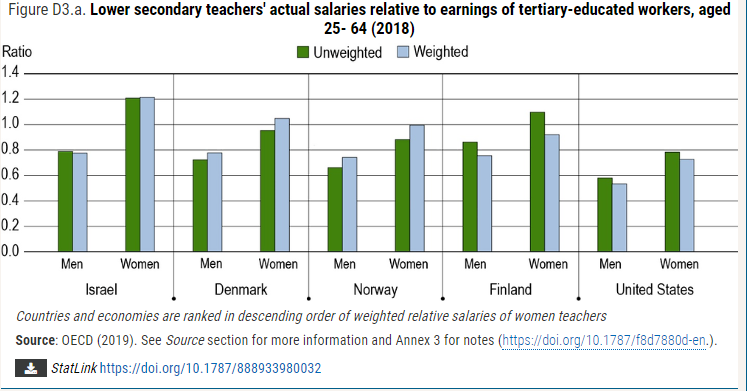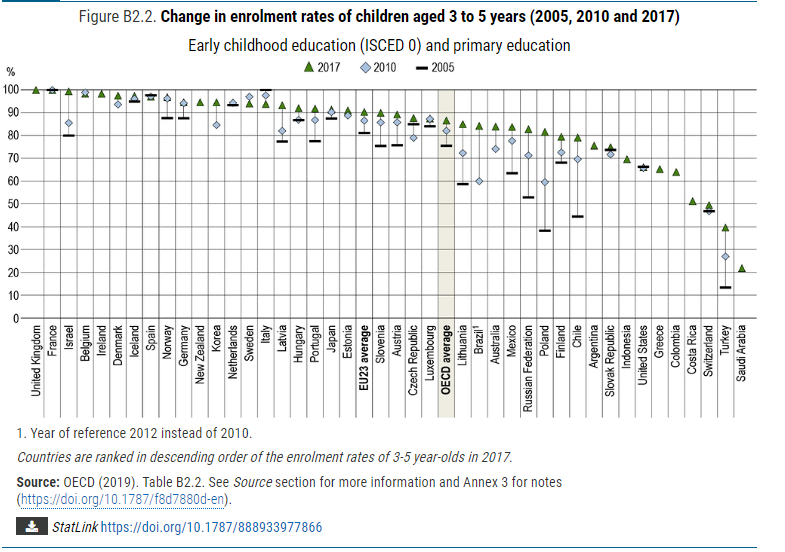Education At A Glance 2019
The latest “Education at a Glance” report from the Organization for Economic Cooperation and Development compares nations on a variety of measures, from investment in early childhood education to the percentage of the population with postsecondary training. [Click HERE for an interactive map with individual country statistics.]
The data include a few bright spots as well as some cautionary notes for U.S. educators seeking to broaden participation in engineering and science.
Among them:
U.S. students spend more time studying science but perform less well than many of their international counterparts:
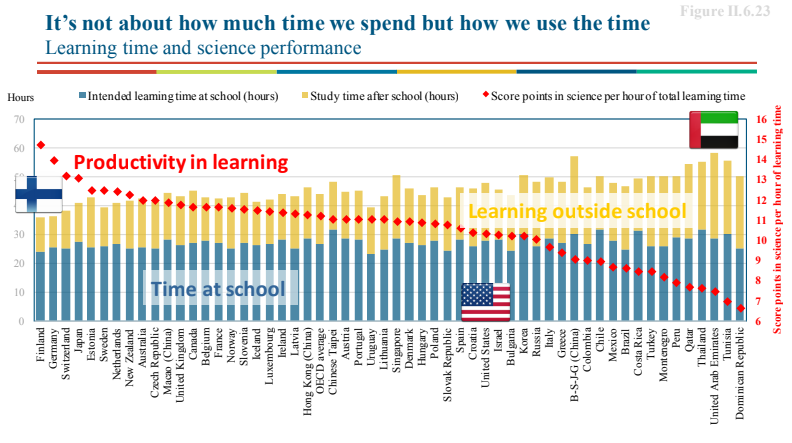
U.S. teachers spend more time instructing students, versus collaborating with colleagues or in professional development, than almost any educators in the world.
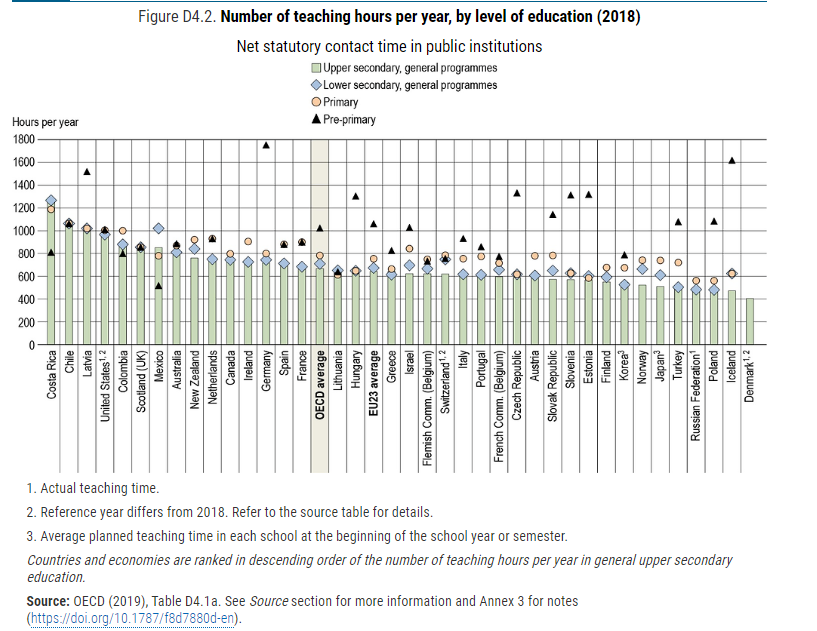
A teacher in general upper secondary education in public institutions has an average teaching load of 667 hours per year. Teaching time ranges from fewer than 500 hours per year in Denmark, Iceland, Poland, the Russian Federation, and Turkey to more than 1 000 hours in Chile, Costa Rica and Latvia, with U.S. teachers averaging 970 hours. Teachers in high-performing education nations like Finland, Iceland, Japan, Korea, and Norway teach for three hours or less per day, on average, compared with six hours or more in Costa Rica and Latvia.
U.S. teachers earn less on average than similarly educated peers in other jobs, but women are closer to parity.
Despite the increase in teachers’ salaries for older age groups, comparing teachers’ salaries with the earnings of tertiary-educated workers seems to show that teachers’ salaries may evolve at a slower rate than the earnings of other workers and that the teaching profession becomes less attractive as the workforce ages. On average across OECD countries and economies, teachers’ actual salaries relative to the earnings of tertiary-educated workers are about 10 percentage points higher among 25-34 year-olds than among the older age groups (55-64 year-olds) at lower secondary level. 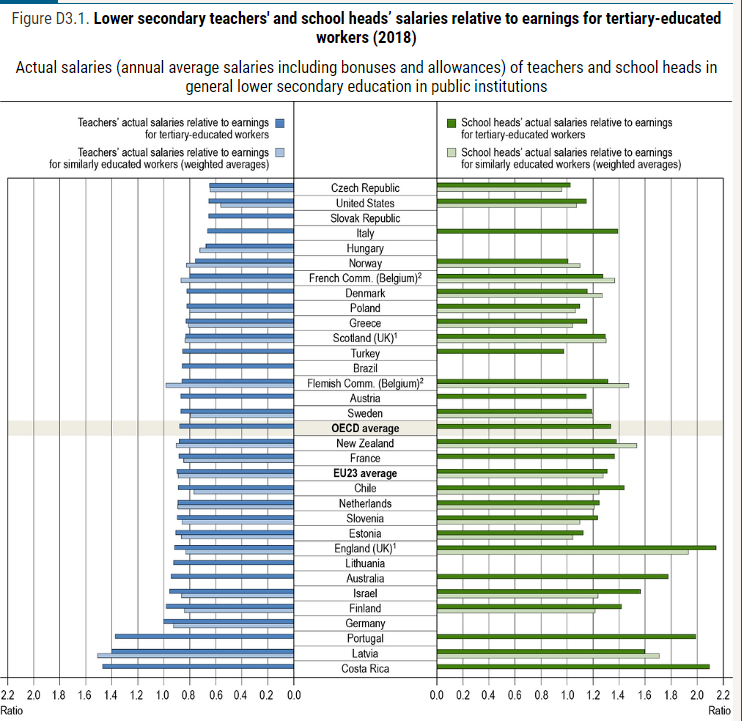
All nations have increased enrollment in early childhood education, but the U.S. has not kept pace.
[See the slides presented by Andreas Schleicher, OECD Director for Education and Skills, who was on a panel of experts hosted by the National Center on Education and the Economy Wednesday, Sept. 18, 2019]
Filed under: K-12 Education News, Special Features, Web Resources
Tags: early childhood education, international comparisons, OECD Education At A Glance 2019, research on education, Research on Learning, STEM education, teacher salaries, Website









